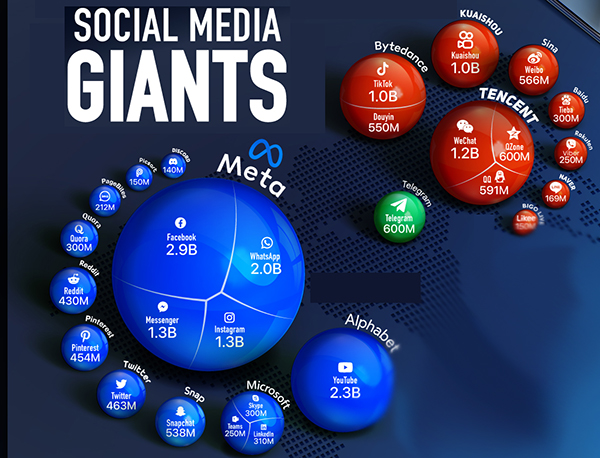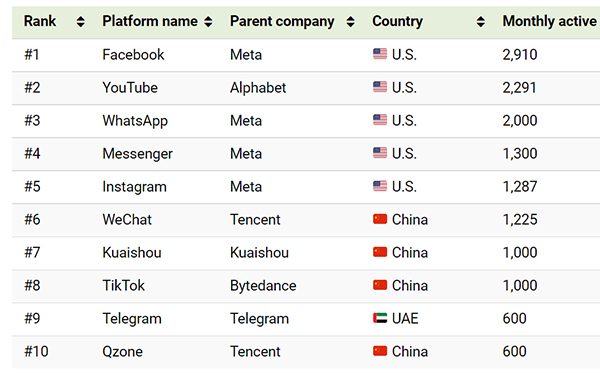Mind Control through Internet (Part 1)
ALSO READ: Part 2: Counter Cognitive Warfare Strategy,
“War is not an act of the will aimed at the inanimate matter, as it is in the mechanical arts…. Rather, it is an act of the will aimed at a living entity that reacts,” Prussian general and military theorist Carl Von Clausewitz (1780-1831).
A US tech tycoon bids ($44 billion) for a social networking platform, with a claim to protect ‘free speech’ and the function of ‘democracy’ and millions became his followers overnight, including many countries like India, ignorant of the fact that his idea of ‘democracy’ was more aligned with the ‘Referendum’ mindset of separatist and pro-Khalistani elements.
Musk has some other interesting concerns and creative solutions for the future of humanity, too (which rarely make headlines in India), such as helping humans to become ‘multi-planet species’ and implanting a ‘fit bit’ in their skulls to prepare them to fight against their ‘extinction’ from the rise of artificial intelligence (AI).
In April 2021, Musk’s Neuralink Corporation released a video in which a monkey was playing the video game MindPong via the Bluetooth-enabled chips inserted into his brain. The video was shared widely and propagated as a landmark step toward merging human consciousness with AI. By December 2021, Musk announced his plans to start testing his chip with the humans too. As of Feb 2022, there were reports that those tests killed 15 out of 23 monkeys, including the one that played the video game, due to ‘extreme suffering.’
Musk, the savior of humanity, also used his Starlink Internet as a weapon against Russian forces in the Ukraine War, and when told to be held accountable for his actions as an “adult” by the Russian Space chief, he immediately started playing “If I die under mysterious circumstances,” kind of tweets, which stormed the social platforms.
Such is the character of 21st-Century Cognitive Warfare! It is no more some covert or indirect operation, where Maskirovka has any role to play. It is a live stream stunt of 280 characters or 60 seconds shorts that hit directly and precisely to its targets and trigger their dopamine release, in other words, makes them ‘feel good about being targeted!
Background to psyche behind the ‘Internet’
Roscosmos (Space Corporation of Russia) chief Dmitry Rogozin stated that Elon Musk’s Starlink terminals “were delivered to the militants of the Nazi Azov Battalion and the Ukrainian Marines in Mariupol by military helicopters,” and Musk is, thus, involved in “supplying the fascist forces in Ukraine with military communication equipment.” The use of Starlink’s Internet terminals as a weapon in the Ukraine War and a recent verbal exchange between Musk and Rogozin refreshed the memories of the Internet’s background in people’s minds.
On 4 October 1957, Soviet Union inaugurated the ‘Space Age’ with the launch of Sputnik 1 – the first artificial satellite of the world. There are enough documents that suggest that the launch of Sputnik created a big political and moral chaos in the USA and the American society’s reaction (military, government, and public combined) to the Sputnik launch is considered an important juncture in America’s history.
Circling the globe every one hour and 35 minutes, Sputnik was traveling on the north to the south orbital path that brought it over the USA, seven times every twenty-four hours, and its steady “beep beep” sound thrilled and terrified the listeners. The popular term ‘Sputnik Moment’ signifies exactly that. It is said that in many senses, Sputnik hysteria sparked the creation of the Internet.
On 7 February 1958, five months after the Sputnik crisis, President Dwight D. Eisenhower created the Advanced Research Projects Agency (ARPA). ARPA was established to catch up with the Soviets in the space race and to lead in three key areas of research: Space technology, ballistic missile defence (BMD), and solid propellants, but very soon (by the early 1960s) it started venturing into the new research areas, including command and control.
There is no doubt that it was the urgency of war (both limited and nuclear) that led ARPA to develop a technology that Rogozin aptly referred to as ‘military communication systems,’ but when we trace the history of the Internet and its different stages of development, from Joseph Carl Robnett Licklider’s “Intergalactic Network” memo in 1963 to Al Gore’s “Information Superhighways” speech in 1994, the first question that comes to mind is what motivated the Pentagon to hire experimental psychologists like Licklider to develop the technology?
There are several historical documents like Charles Bray’s paper “Toward a Technology of Human Behavior for Defence Use” published in 1962 and Ellen Herman’s book “The Romance of American Psychology” (1995) that suggest that throughout the Cold War phase, exploring the ‘Psychology’ and human behavior aspects, was one of the key interest areas of the US military experts. Highlighting some numbers in her book, Ellen writes that “Between 1940 and 1970, the number of psychologists and psychiatrists climbed astronomically,” and “membership in American Psychological Association grew by more than 1,100 per cent, from 2,739 in 1940 to 30,839 in 1970.” She noted that “psychological experts’ rise to power was due initially to the benefits of war, World War at first and then Cold War” and “military imperatives during World War II, provided psychological experts with their first encounter with the policymakers.”
It was during this period and in this background, that the idea of the Internet was developed and Licklider and other experimental psychologist professionals contributed to its design, not to promote the ideas of liberty, democracy, equality, one world, innovation, and freedom of speech kind of fancy ideas but for the objectives of the ‘War’ and to win the ‘battles of the mind.’ Their focus was to provide solutions to loosely defined military problems from the broadest possible perspective. That generation was tasked with waging the psychological warfare, ‘man-machine’ engineering problems, experimenting with the ‘sensation and perception’ aspects and exploring the mysteries of human motivation, attitudes, and behavior.
So, this idea that wars could be won by advancing weapon technologies and killing one’s opponents was repeatedly identified as naïve and incorrect!
While on one hand, these sociologists, anthropologists, political scientists, and psychologists of the Pentagon tried harder to be seen as ‘scientific,’ as possible, on the other hand, they reached the conclusion that there could be no higher military priority than the “control of human subjectivity.”
It is a bit hard to imagine that if these experts from the Pentagon would have pitched their products/ ideas directly to the third countries, with a promise to help in their economic progress, children’s education, knowledge/ information sharing, and to make their democracies strong, given the track record of such claims, which country on earth would have accepted that deal!
So for Licklider’s “intergalactic network” vision to be fulfilled, the private sector’s financial support, a pinch of humanitarian approach, some democratic jargon, and the narration industry’s backing were needed, and from here the idea of “Information Superhighways” was born.
Information Superhighways
In his famous (March 21, 1994) “Information Superhighways” speech, Al Gore, the 45th Vice President of the USA said: “This GII (Global Information Infrastructure) will circle the globe with information superhighways on which all people can travel. These highways or, more accurately, networks of distributed intelligence will allow us to share information, to connect, and to communicate as a global community.” It was Al Gore who promoted the legislation that funded an expansion of ARPANET and lobbied aggressively in favor of privatization and globalization of the Internet. Gore is currently a member of Apple’s board of directors and a senior partner at venture capitalist firm Kleiner Perkins (the firm which has been an early investor in more than 900 high tech/social media companies in the US, including Amazon, Google, and Twitter).
In April 1994, Netscape Communications Corporation was born, and Microsoft created a web browser for Windows 95. In the same year, Amazon.com was launched as an online marketplace for books. In 1995, Yahoo was incorporated and a search engine function Yahoo search was introduced. Then came the era of Netflix (1997), Google (1998), Facebook (2004), YouTube (2005), and Twitter (2006).
Internet witnessed a phenomenal expansion in its new avatar, from only 16 million users in 1995 to 5 billion users (63% of the world population) in 2022. It is interesting that in their earlier pitch for Information Superhighways, Al Gore and Clinton both projected the idea as an educational tool, virtual library of the future, knowledge/ information exchange utility and virtual research facility, etc., designed to harvest local and global knowledge economy and innovation culture. But we have seen in a very short period of time, that things shifted to dating, entertainment, shopping, live streaming, social experiments, activism, psychological, and political campaigns!
“The fate of information in the typically American world is to become something which can be bought or sold.” mathematician Norbert Wiener, ‘The Human Use of Human Beings (1950).
Convenience of driving “Mass Surveillance”
In 2013, an American intelligence contractor turned whistleblower Edward Snowden revealed the secret wide-ranging information-gathering programmes conducted by National Security Agency (U.S. intelligence agency), and the stories of those leaks were published in The Guardian and Washington Post newspapers. In the article “NSA Prism program taps in to user data of Apple, Google and others,” published in The Guardian, (7 June 2013), it was highlighted how the NSA has obtained “direct access to the systems of Google, Facebook, Apple, and other US internet giants.” It revealed that “some of the world’s largest Internet brands are claimed to be part of the information-sharing programme (code name PRISM) since its introduction in 2007.” The article says that Microsoft was the first, with a collection beginning in December 2007. It was followed by Yahoo in 2008; Google, Facebook, and PalTalk in 2009; YouTube in 2010; Skype and AOL in 2011; and, finally, Apple, which joined the programme in 2012. And “collectively, the companies cover the vast majority of online email, search, video and communications networks.”
In 2014, while interacting with Edward Snowden virtually on a Russian TV show, Russian President Vladimir Putin said that Russia is not carrying out mass surveillance programmes of the kind Snowden exposed in the USA, and “we don’t have as much money as they do in the US,” he added sarcastically. A few days later, while speaking at a media forum in St. Petersburg Putin said that the Internet was originally created as a ‘CIA project’ and “it is still developing as such.”
LifeLog Project – DARPA
In 1972, ARPA gained the ‘Defense’ prefix and was renamed DARPA, but in 1993 it reverted to its original name ARPA (as this acronym suits more to commercial applications), and finally three years later, in 1996, again renamed as ‘DARPA,’ to re-emphasize agency’s original focus. In 2002, DARPA launched the Personalized Assistant that Learns (PAL) programme, a cognitive system to “make military decision-making more efficient and more effective at multiple levels of command.” (This research led to the launch of Siri Inc in 2007, which, three years later, was acquired by the Apple).
In mid-2003 something more interesting happened. DARPA launched an ambitious project called LifeLog, which officially was aimed at recording essentially all of a person’s movements and conversations and everything that they listened to, watched, read and bought. The idea was to create a permanent, searchable, electronic diary of the entire lives, of the entire population of the planet. LifeLog was a bit ahead of its time, it was tasked to perform everything that smartphones, Facebook, Google, Amazon, Twitter, YouTube, WhatsApp, and other apps do these days! The idea was to trace the ‘threads’ of an individual’s life in terms of events/ states/ relationships, deducing behavioral patterns from monitoring people’s daily activities, and to gather in a single place just about everything an individual says, sees, or does.
It cannot be a mere coincidence but it is said that the exact date (3 February 2004) on which Facebook was launched, Pentagon revoked its LifeLog project!
The real log of DARPA’s fascinating research is a bit long! But the question is – after developing dozens of interesting commercial tools, where does DARPA is focusing its energy these days?
‘AI-Next’ Campaign
In September 2018, DARPA launched a multi-year investment of more than $2 billion (in new and existing programmes) called the “AI Next” campaign. According to its official statement: “AI Next builds on DARPA’s five decades of AI technology creation to define and to shape the future, always with the Department’s hardest problems in mind.” DARPA is investing in the third wave of AI to develop machines that “understand and reason in context.” In Feb-March 2019, the agency started exploring ways to improve how AI systems like Siri/ Alexa teach themselves language and the Competency-Aware Machine Learning programme too. In a nutshell, the approach is quite simple, as they often say – “the best way to avoid surprises is to create surprises.”
Stunts on ‘Information Superhighways’
“War is never merely about victory on the battlefield or the simple conquest of land; it is about the pursuit of a policy that cannot be realized in any other way than through force.” Carl von Clausewitz (1780-1831)
There are three important elements of the idea of “Information Superhighways”: Investment, Infrastructure, and Public Participation. While the first two are in absolute control of their makers, it is the third one, which belongs to us, the rest of the world that is traveling on these highways. Without ‘Public Participation,’ a highway is of no use, be it physical or virtual and it is this third and most crucial element of Information Superhighways, which is a matter of concern for democracies around the world, too.
Misinformation/Disinformation
Misinformation/ Disinformation is one of the most popular global concerns of our time. From Musk to Obama to Kissinger to white-haired architects of Information Superhighways, a flood of ‘free speech absolutists’ and guardians of ‘democracy’ is emerging in the Western world and it seems that almost every important person on earth is nowadays issuing a ‘wake-up call’ for democracy/ humanity and fighting the battle for a ‘safer’ Internet!
“People are dying because of misinformation,” said former US president Barack Obama in a recent speech. While the EU has passed Digital Services/ Digital Market Acts, the USA is forming the “Disinformation Governance Board,” too, but despite such enormous human efforts/ concerns the information superhighway, on the contrary, is becoming more and more chaotic, unsafe, and disordered with time.
With a similar kind of urgency the world was debating terrorism and counter-terrorism, until a few years ago, it is now discussing the issues of Misinformation and Disinformation. It is important to note that global forums like the UN are yet to develop a common consensus on the definition of ‘Terrorism,’ so devising an effective strategy is a far cry.
“You cannot defeat the enemy you can’t define,” often says national security adviser (NSA) Ajit Doval. Similar to the issue of terrorism, what is missing in all these global deliberations/ campaigns against Misinformation/ Disinformation is the affirmation of the basic fact that on the matters related to social, economical, religious, regional, and national consequences, spreading misinformation/ disinformation is a crime, cause of crime or a motive of the crime, and it needs to be tackled that way.
Misinformation is not a simple ‘spam,’ content that can be laughed at or ignored. In the case of India, we have seen how under the broader flag of ‘Misinformation/ Disinformation’ there are dedicated channels/ actors who promote anti-national/ anti-system and anti-establishment sentiments, and create social divide in the name of caste, community, regionalism, language identities, etc. We have seen how from abrogation of Article 370 Act to Citizenship Amendment Act (CAA) to Farms Laws, and even for those future bills/ moves that are yet to be drafted by the government like National Register of Citizens (NRC), a mass level damage to people and property was done, across the country, within a matter of few minutes of misinformation spread.
Last year, the number of imposed Internet shutdowns crossed over 106 in India. A few days back in May 2022, the Ministry of Information and Broadcasting (MIB) banned some 16 YouTube channels (under the IT Rules) for spreading misinformation on India’s national security and foreign relations matters, stirring communal discord and disturbing the law and order situation in the country. In April, MIB banned over 22 YouTube channels, and a number of similar actions were taken in the past. These channels/social media accounts usually hold millions of subscriptions/ followers and, by the time the ban is initiated, the damage is already done. A ban cannot automatically trigger a ‘delete all’ command on millions of devices where such content is already copied/downloaded. Misinformation/ disinformation spread on social media sometimes transitions to much larger audiences when picked up by traditional media – print or electronic too!
A new study by MIT scholars on Misinformation, published in 2018, found that on social media “falsehood diffuses significantly farther, faster, deeper, and more broadly than the truth, in all categories of information, and in many cases by an order of magnitude.” Many such types of research are being conducted on the issues of Misinformation and Disinformation, and they often talk about things like novelty hypothesis, transmission chain, Machiavellian intelligence/ Social Brain, laws of human nature, etc., but interestingly, none of these researches ever attempt to reach the root of the problem!
“Everything is very simple in war, but the simplest thing is difficult.” Carl von Clausewitz (1780-1831)
If Al Gore’s ‘Information Superhighways’ analogy was right then social media platforms/ apps can be seen as the vehicles on those highways and misinformation/ disinformation as the fuel that runs those vehicles (after all, these companies make enormous profit out of misinformation/ disinformation). But then the question comes – who is sitting on the driver’s seat and who is performing stunts on the information highways?
ALSO READ: Part 2: Counter Cognitive Warfare Strategy



















